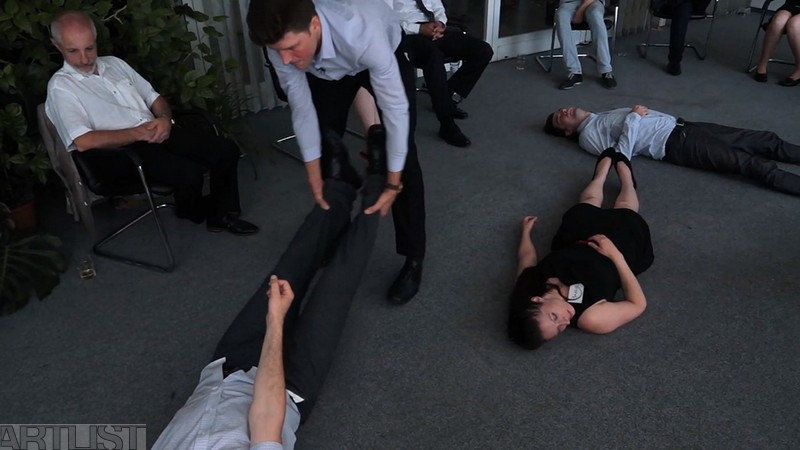This international display in the small Finnish village of Fiskars, about an hour’s drive from Helsinki, is hosting its first “biennial”. The village has a strong local context mostly tied to the iron industry – it is traditionally the home of household goods, garden tools and craft items (everyone will surely now have a mental image of knives, axes or scissors made by the eponymous brand). Fiskars Village has turned into a display both of design and fine art, with both exhibition blocks presented at the same time, giving visitors the advantage of a broader selection.
Local curator Jenni Nurmenniemi was the main curator. The exhibition, titled Being With, reflected on feminist positions in relation to the threat of ecological crisis. These were not radical works – rather, the exhibition was about uncovering certain layers and creating a symbiosis or internal dialogue sensitively hidden in the works of the twenty presented international artists. The artists work in various media from painting and sculpture to new media. The curator had worked with many of them before on solo exhibitions for HIAP (Helsinki International Artist Programme). Here, she had the opportunity to place the artists into the context of a group exhibition.
The exhibition was installed throughout the village. It was presented in the two central wooden houses which were not, however, intended primarily as exhibition halls. Finding an architectural layout for the works that would not rob them of sensitivity was therefore more of a challenge than usual. The artists were not only presented inside – their works made their way into public space. Many of them were hard to find, but this involved the spectator even further into the local game of being an attentive observer, creating a potential inner dialogue with one’s surroundings. Works in the park, on the meadow, next to the river, or on the bridge were part of a processual situation. Nature enveloped some of the works in tall grass making them practically invisible, their being thus gaining a second dimension. This authenticity underlined the curator’s important idea – ephemerally arisen from this accident – about coexistence and respect.



